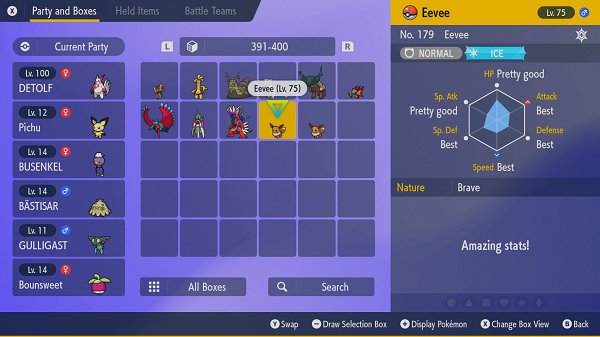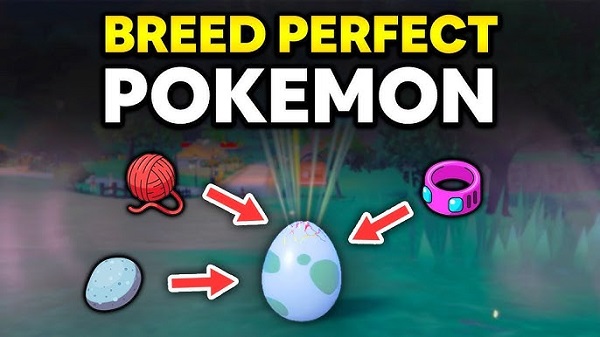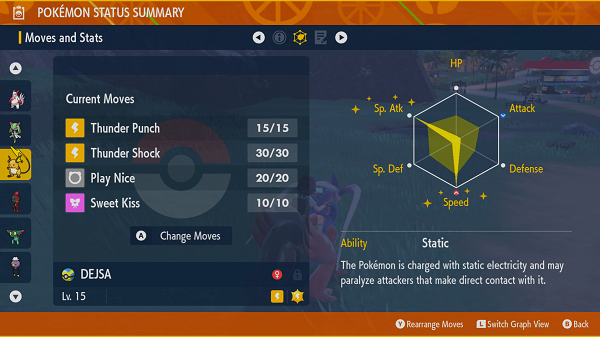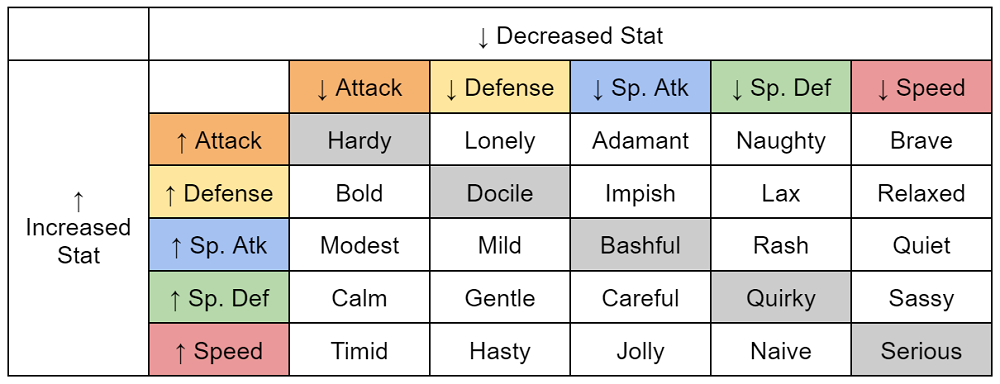Advertisement
Popular Now
Capturing and training Pokémon with the best stats is a goal for many trainers, whether you're a competitive battler or a casual player aiming to complete your Pokédex with top-tier Pokémon. Achieving this requires a deep understanding of game mechanics, strategic planning, and dedication. From breeding to battling, there are numerous steps and techniques to optimize your Pokémon’s stats. This comprehensive guide will walk you through the process, arranged chronologically and thematically, to help you build a team of Pokémon with exceptional stats. Whether you're playing the latest Pokémon game or revisiting classics, these methods will enhance your gameplay and give you a competitive edge.
 Once you understand IVs, the next step is to evaluate your Pokémon’s potential. In newer Pokémon games, you can unlock the Judge function by progressing through the story or completing specific tasks, such as defeating a certain number of Gym Leaders. This feature allows you to see a Pokémon’s IV quality, rated from "No Good" (0 IV) to "Best" (31 IV). Early in the game, focus on catching multiple Pokémon of the same species to increase your chances of finding one with high IVs.
You can also use online tools or in-game NPCs in some titles, like the IV Checker in Pokémon Sword and Shield, to get a rough estimate of IVs before unlocking the Judge function. Catching Pokémon in Max Raid Battles or using specific items like Bottle Caps (for Hyper Training, discussed later) can also help. Prioritize Pokémon with at least a few "Best" IVs for your team early on.
Once you understand IVs, the next step is to evaluate your Pokémon’s potential. In newer Pokémon games, you can unlock the Judge function by progressing through the story or completing specific tasks, such as defeating a certain number of Gym Leaders. This feature allows you to see a Pokémon’s IV quality, rated from "No Good" (0 IV) to "Best" (31 IV). Early in the game, focus on catching multiple Pokémon of the same species to increase your chances of finding one with high IVs.
You can also use online tools or in-game NPCs in some titles, like the IV Checker in Pokémon Sword and Shield, to get a rough estimate of IVs before unlocking the Judge function. Catching Pokémon in Max Raid Battles or using specific items like Bottle Caps (for Hyper Training, discussed later) can also help. Prioritize Pokémon with at least a few "Best" IVs for your team early on.
 Breeding is one of the most reliable ways to obtain Pokémon with perfect IVs. By breeding two Pokémon of the same species (or compatible Egg Groups), you can pass down IVs from the parents to the offspring. The Destiny Knot, an item held by one parent, ensures that five of the six IVs are randomly inherited from the parents’ combined pool, significantly increasing the odds of high-IV offspring.
To start, catch or breed a Pokémon with high IVs (ideally a Ditto, as it can breed with almost any Pokémon). Then, pair it with another high-IV Pokémon. Over time, you’ll hatch Pokémon with progressively better IVs. The Everstone, when held by a parent, ensures the offspring inherits the parent’s nature, further refining your results.
Breeding is one of the most reliable ways to obtain Pokémon with perfect IVs. By breeding two Pokémon of the same species (or compatible Egg Groups), you can pass down IVs from the parents to the offspring. The Destiny Knot, an item held by one parent, ensures that five of the six IVs are randomly inherited from the parents’ combined pool, significantly increasing the odds of high-IV offspring.
To start, catch or breed a Pokémon with high IVs (ideally a Ditto, as it can breed with almost any Pokémon). Then, pair it with another high-IV Pokémon. Over time, you’ll hatch Pokémon with progressively better IVs. The Everstone, when held by a parent, ensures the offspring inherits the parent’s nature, further refining your results.
 Besides IVs, Effort Values (EVs) are critical for maximizing stats. EVs are points gained by defeating specific Pokémon, with each species granting EVs in a particular stat (e.g., defeating a Zubat gives 1 Speed EV). A Pokémon can earn up to 510 EVs total, with a maximum of 252 per stat. To create a Pokémon with the best stats, allocate EVs strategically based on its role (e.g., max Speed and Attack for a physical sweeper).
Use items like Vitamins (e.g., Protein, Carbos) to add 10 EVs per use or EV-enhancing items like the Power Bracer to boost specific EV gains during battles. In newer games, you can reset EVs using Berries (e.g., Pomeg Berry reduces HP EVs) or visit an NPC like the EV Reset Lady in Pokémon X and Y.
Besides IVs, Effort Values (EVs) are critical for maximizing stats. EVs are points gained by defeating specific Pokémon, with each species granting EVs in a particular stat (e.g., defeating a Zubat gives 1 Speed EV). A Pokémon can earn up to 510 EVs total, with a maximum of 252 per stat. To create a Pokémon with the best stats, allocate EVs strategically based on its role (e.g., max Speed and Attack for a physical sweeper).
Use items like Vitamins (e.g., Protein, Carbos) to add 10 EVs per use or EV-enhancing items like the Power Bracer to boost specific EV gains during battles. In newer games, you can reset EVs using Berries (e.g., Pomeg Berry reduces HP EVs) or visit an NPC like the EV Reset Lady in Pokémon X and Y.

Understanding Pokémon Stats and IVs
Before diving into strategies, it’s crucial to understand what makes a Pokémon’s stats exceptional. Each Pokémon has six core stats: HP, Attack, Defense, Special Attack, Special Defense, and Speed. These stats are influenced by Individual Values (IVs), which are hidden values ranging from 0 to 31 assigned to each stat at birth or capture. A Pokémon with "perfect" IVs (31 in all relevant stats) will have the highest possible stats for its species, making IVs the foundation of a competitively viable Pokémon. IVs are randomly determined when a Pokémon is encountered in the wild or hatched from an egg, but various in-game mechanics allow trainers to influence or check IVs. For example, in games like Pokémon Scarlet and Violet, the Judge function in the Pokémon Box lets you assess a Pokémon’s IVs once you’ve unlocked it. Understanding IVs is the first step, as it guides your decisions on which Pokémon to keep, train, or breed.Why IVs Matter
High IVs provide a significant boost to a Pokémon’s performance, especially in competitive battles where small differences in stats can determine victory. For instance, a Pokémon with a 31 IV in Speed might outspeed an opponent with a 30 IV, securing a critical first move. Learning to identify and prioritize Pokémon with high IVs early on saves time and resources.Checking IVs Early in the Game
 Once you understand IVs, the next step is to evaluate your Pokémon’s potential. In newer Pokémon games, you can unlock the Judge function by progressing through the story or completing specific tasks, such as defeating a certain number of Gym Leaders. This feature allows you to see a Pokémon’s IV quality, rated from "No Good" (0 IV) to "Best" (31 IV). Early in the game, focus on catching multiple Pokémon of the same species to increase your chances of finding one with high IVs.
You can also use online tools or in-game NPCs in some titles, like the IV Checker in Pokémon Sword and Shield, to get a rough estimate of IVs before unlocking the Judge function. Catching Pokémon in Max Raid Battles or using specific items like Bottle Caps (for Hyper Training, discussed later) can also help. Prioritize Pokémon with at least a few "Best" IVs for your team early on.
Once you understand IVs, the next step is to evaluate your Pokémon’s potential. In newer Pokémon games, you can unlock the Judge function by progressing through the story or completing specific tasks, such as defeating a certain number of Gym Leaders. This feature allows you to see a Pokémon’s IV quality, rated from "No Good" (0 IV) to "Best" (31 IV). Early in the game, focus on catching multiple Pokémon of the same species to increase your chances of finding one with high IVs.
You can also use online tools or in-game NPCs in some titles, like the IV Checker in Pokémon Sword and Shield, to get a rough estimate of IVs before unlocking the Judge function. Catching Pokémon in Max Raid Battles or using specific items like Bottle Caps (for Hyper Training, discussed later) can also help. Prioritize Pokémon with at least a few "Best" IVs for your team early on.
Tools for IV Checking
Besides the Judge function, some games offer NPCs who hint at IVs, such as the Stats Judge in Pokémon Sun and Moon. Keep an eye out for these resources, as they help you filter out weaker Pokémon and focus on those with competitive potential.Catching Pokémon with High IVs
Catching wild Pokémon with high IVs is one of the earliest ways to build a strong team. In games like Pokémon Brilliant Diamond and Shining Pearl, certain areas like the Grand Underground have Pokémon with higher IVs as you progress. Using the Synchronize ability, where a lead Pokémon with a desired nature increases the chance of wild Pokémon having the same nature, can also align IVs with your strategy. Another effective method is participating in Max Raid Battles or Dynamax Adventures, which often yield Pokémon with guaranteed high IVs (typically 3–5 perfect IVs in later games). Chain fishing or using the Poké Radar in older games like Pokémon X and Y can also increase the odds of encountering Pokémon with better stats. Be patient and stock up on Poké Balls to maximize your catches.Maximizing Catch Rates
To improve your chances, use moves like False Swipe to lower a Pokémon’s HP without knocking it out, and status conditions like Sleep or Paralysis to make captures easier. Items like the Quick Ball (effective early in battle) or Repeat Ball (for previously caught species) can also help.Breeding for Perfect IVs
 Breeding is one of the most reliable ways to obtain Pokémon with perfect IVs. By breeding two Pokémon of the same species (or compatible Egg Groups), you can pass down IVs from the parents to the offspring. The Destiny Knot, an item held by one parent, ensures that five of the six IVs are randomly inherited from the parents’ combined pool, significantly increasing the odds of high-IV offspring.
To start, catch or breed a Pokémon with high IVs (ideally a Ditto, as it can breed with almost any Pokémon). Then, pair it with another high-IV Pokémon. Over time, you’ll hatch Pokémon with progressively better IVs. The Everstone, when held by a parent, ensures the offspring inherits the parent’s nature, further refining your results.
Breeding is one of the most reliable ways to obtain Pokémon with perfect IVs. By breeding two Pokémon of the same species (or compatible Egg Groups), you can pass down IVs from the parents to the offspring. The Destiny Knot, an item held by one parent, ensures that five of the six IVs are randomly inherited from the parents’ combined pool, significantly increasing the odds of high-IV offspring.
To start, catch or breed a Pokémon with high IVs (ideally a Ditto, as it can breed with almost any Pokémon). Then, pair it with another high-IV Pokémon. Over time, you’ll hatch Pokémon with progressively better IVs. The Everstone, when held by a parent, ensures the offspring inherits the parent’s nature, further refining your results.
Breeding Essentials
- Destiny Knot: Passes down five IVs from parents.
- Everstone: Ensures the offspring inherits the parent’s nature.
- Power Items: Guarantee a specific stat’s IV is passed down when held.
Using Items to Enhance IVs
If breeding or catching high-IV Pokémon is too time-consuming, Hyper Training offers a shortcut. Introduced in Pokémon Sun and Moon, Hyper Training allows you to max out a Pokémon’s IVs using Bottle Caps. This feature is available at Level 50 or higher (Level 100 in earlier games) and requires one Bottle Cap per stat or a Gold Bottle Cap for all stats. Bottle Caps can be earned through Battle Towers, Max Raid Battles, or purchased with in-game currency like Battle Points (BP). Hyper Training doesn’t change the Pokémon’s actual IVs for breeding purposes but boosts their effective stats in battle, making it ideal for Pokémon you’ve already trained or caught with suboptimal IVs.Finding Bottle Caps
Check in-game shops, participate in ranked battles, or complete specific challenges to earn Bottle Caps. In Pokémon Scarlet and Violet, you can also find them in Tera Raid Battles or through auctions in Porto Marinada.Optimizing Effort Values (EVs)
 Besides IVs, Effort Values (EVs) are critical for maximizing stats. EVs are points gained by defeating specific Pokémon, with each species granting EVs in a particular stat (e.g., defeating a Zubat gives 1 Speed EV). A Pokémon can earn up to 510 EVs total, with a maximum of 252 per stat. To create a Pokémon with the best stats, allocate EVs strategically based on its role (e.g., max Speed and Attack for a physical sweeper).
Use items like Vitamins (e.g., Protein, Carbos) to add 10 EVs per use or EV-enhancing items like the Power Bracer to boost specific EV gains during battles. In newer games, you can reset EVs using Berries (e.g., Pomeg Berry reduces HP EVs) or visit an NPC like the EV Reset Lady in Pokémon X and Y.
Besides IVs, Effort Values (EVs) are critical for maximizing stats. EVs are points gained by defeating specific Pokémon, with each species granting EVs in a particular stat (e.g., defeating a Zubat gives 1 Speed EV). A Pokémon can earn up to 510 EVs total, with a maximum of 252 per stat. To create a Pokémon with the best stats, allocate EVs strategically based on its role (e.g., max Speed and Attack for a physical sweeper).
Use items like Vitamins (e.g., Protein, Carbos) to add 10 EVs per use or EV-enhancing items like the Power Bracer to boost specific EV gains during battles. In newer games, you can reset EVs using Berries (e.g., Pomeg Berry reduces HP EVs) or visit an NPC like the EV Reset Lady in Pokémon X and Y.
EV Training Hotspots
- HP: Route 1 in Pokémon Scarlet (Lillipup, 1 HP EV).
- Attack: Victory Road (Geodude, 1 Attack EV).
- Speed: Route 3 (Zubat, 1 Speed EV).
Choosing the Right Nature
A Pokémon’s nature affects its stat growth, boosting one stat by 10% and lowering another by 10%. For example, an Adamant nature (+Attack, -Special Attack) is ideal for physical attackers like Garchomp. Selecting the right nature is essential for maximizing a Pokémon’s potential, especially in competitive play. You can influence natures through breeding with an Everstone or use Mints, introduced in Pokémon Sword and Shield, to change a Pokémon’s nature without affecting breeding. Mints are available through Battle Towers or in-game shops and provide flexibility for Pokémon caught in the wild.Nature Chart

Training Through Battles
Battling is not only a way to gain EVs but also a method to test and refine your Pokémon’s stats. Competitive formats like Battle Tower or online ranked battles help you identify weaknesses in your Pokémon’s stats and adjust accordingly. For example, if your Pokémon is consistently outsped, you may need to prioritize Speed EVs or a different nature. In-game facilities like the Battle Maison (Pokémon X and Y) or Battle Tower (Sword and Shield) offer consistent battles against strong opponents, helping you earn BP for items like Bottle Caps or Vitamins. Regularly battling also improves your understanding of your Pokémon’s performance in real scenarios.Utilizing Held Items and Abilities
Held items and abilities can enhance a Pokémon’s stats or compensate for weaknesses. For example, the Choice Band boosts Attack by 50% but locks the Pokémon into one move, ideal for physical sweepers with high IVs and EVs. Abilities like Speed Boost (Blaziken) or Intimidate (Gyarados) can also give your Pokémon a stat advantage in battle. When selecting held items, consider your Pokémon’s role and stats. A Life Orb increases damage output at the cost of HP, while a Focus Sash ensures a Pokémon survives a one-hit knockout with 1 HP. Pair these with high-IV, EV-trained Pokémon for maximum impact.Top Held Items
- Choice Specs: Boosts Special Attack by 50%.
- Leftovers: Restores HP each turn.
- Focus Sash: Prevents one-hit knockouts.
















